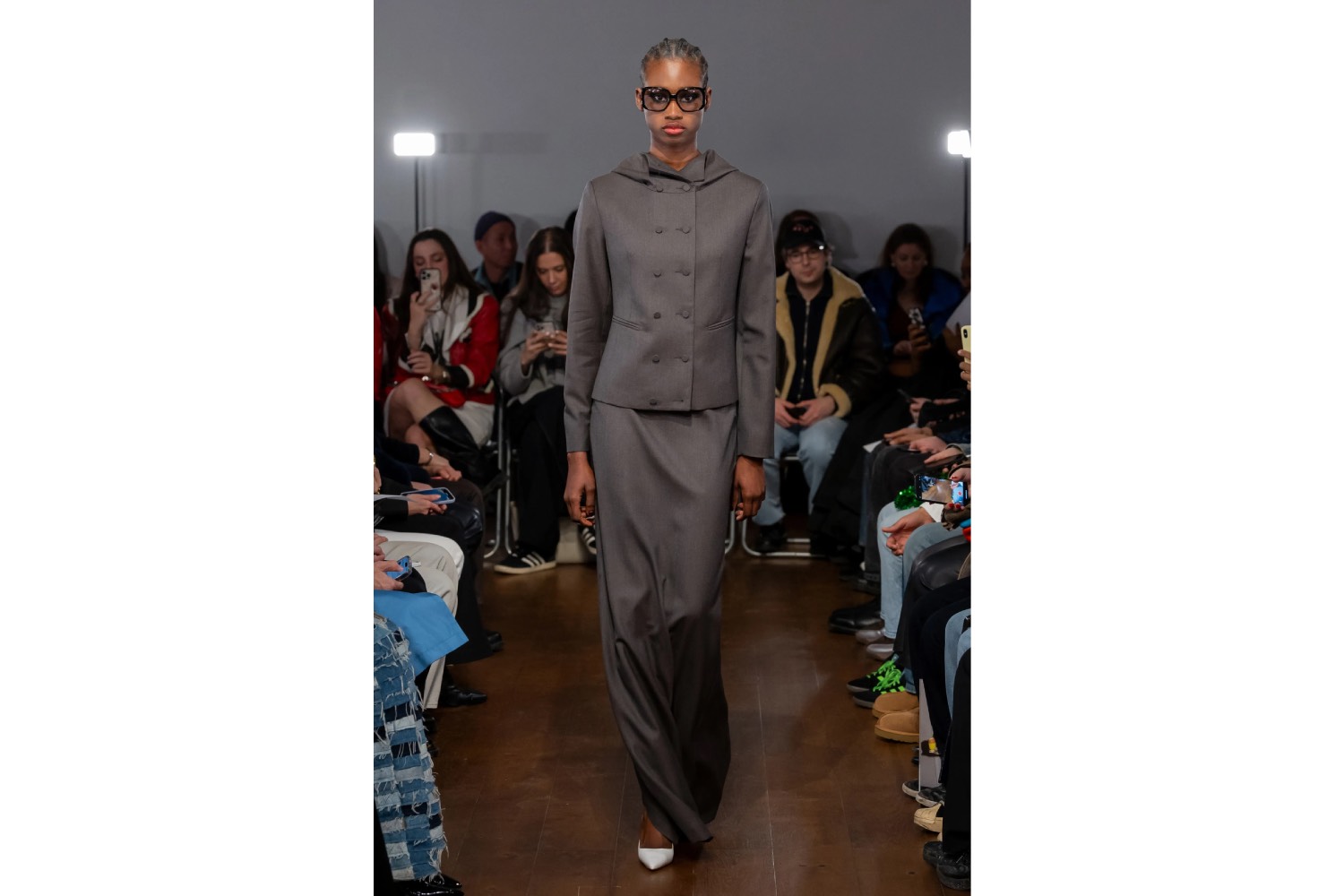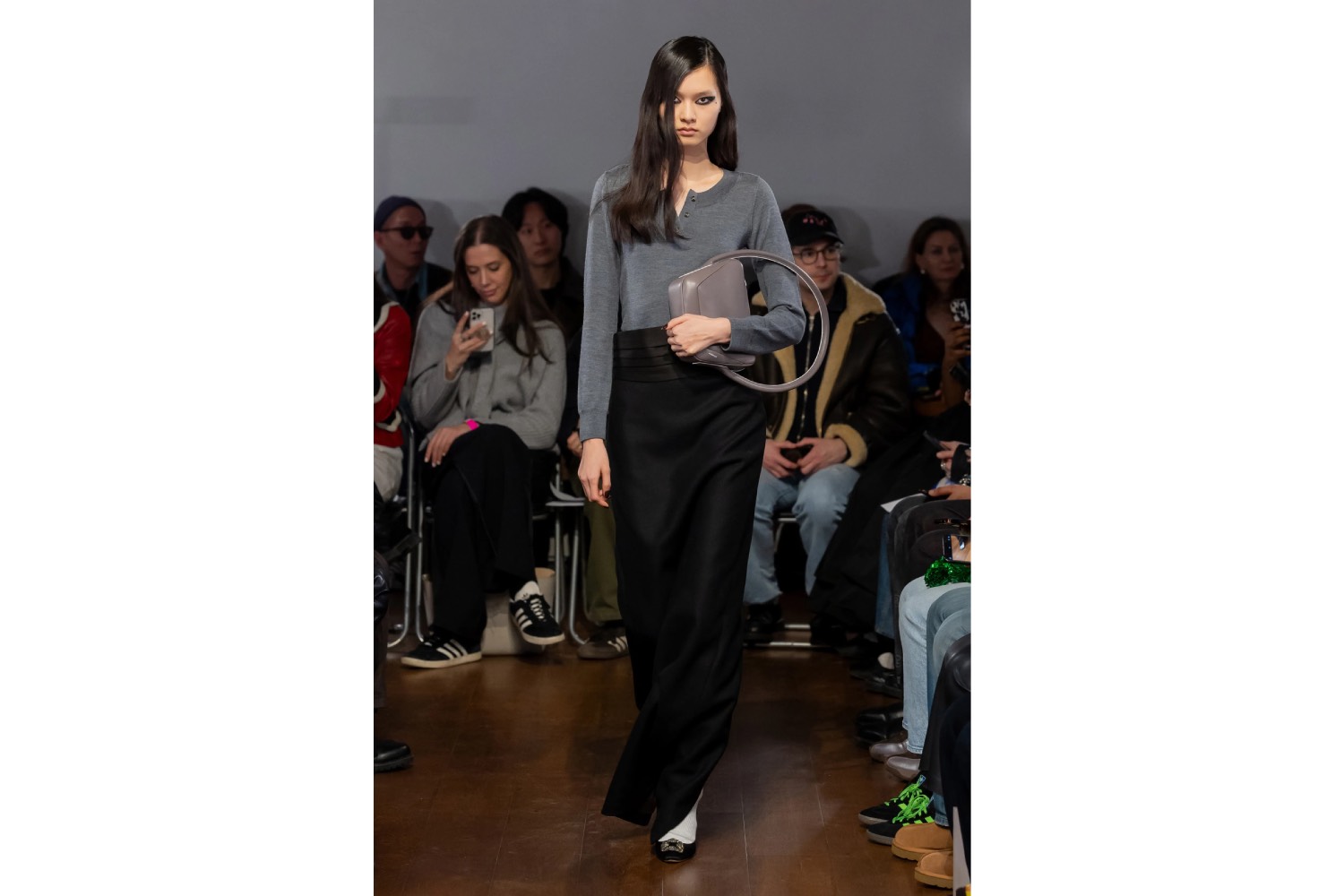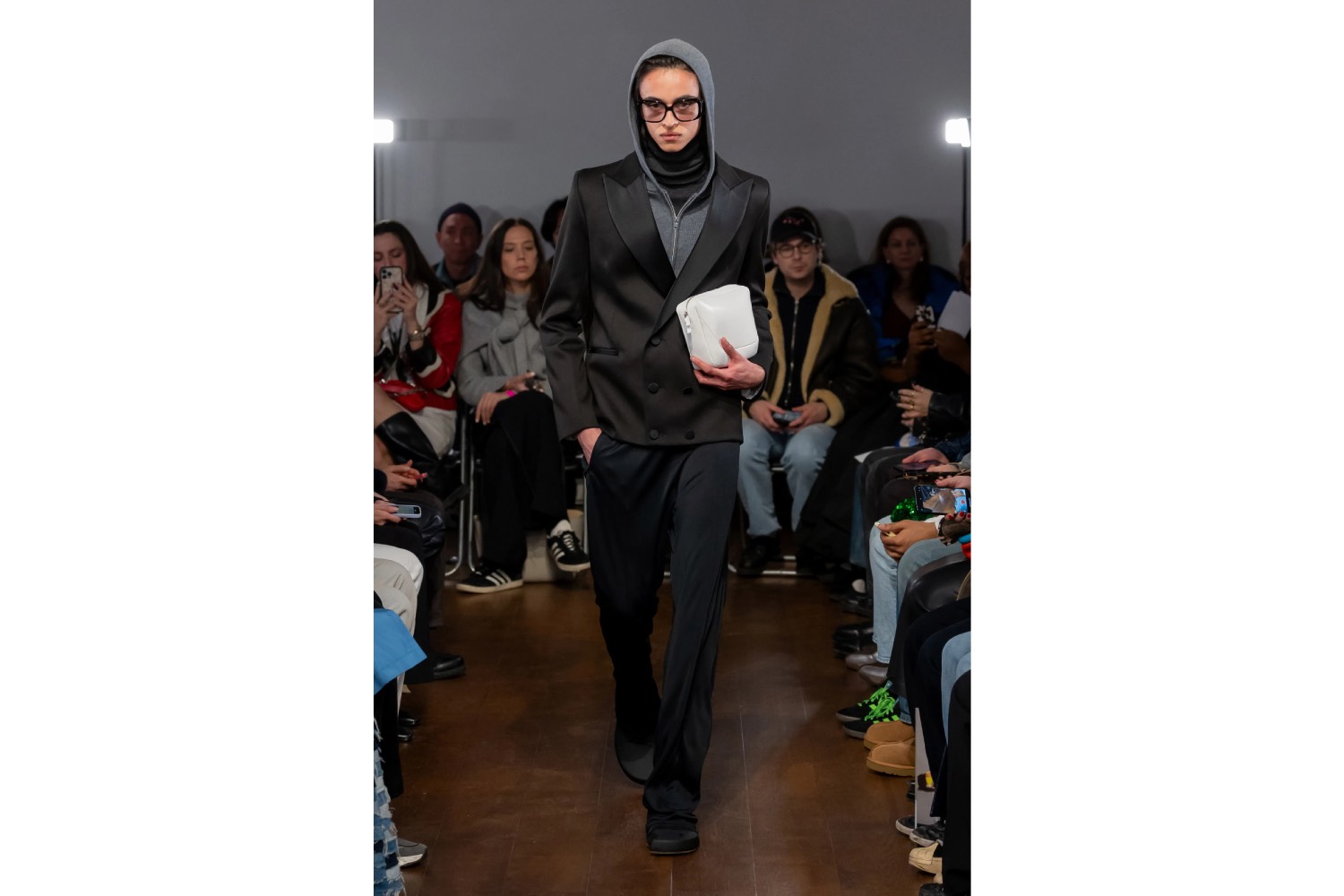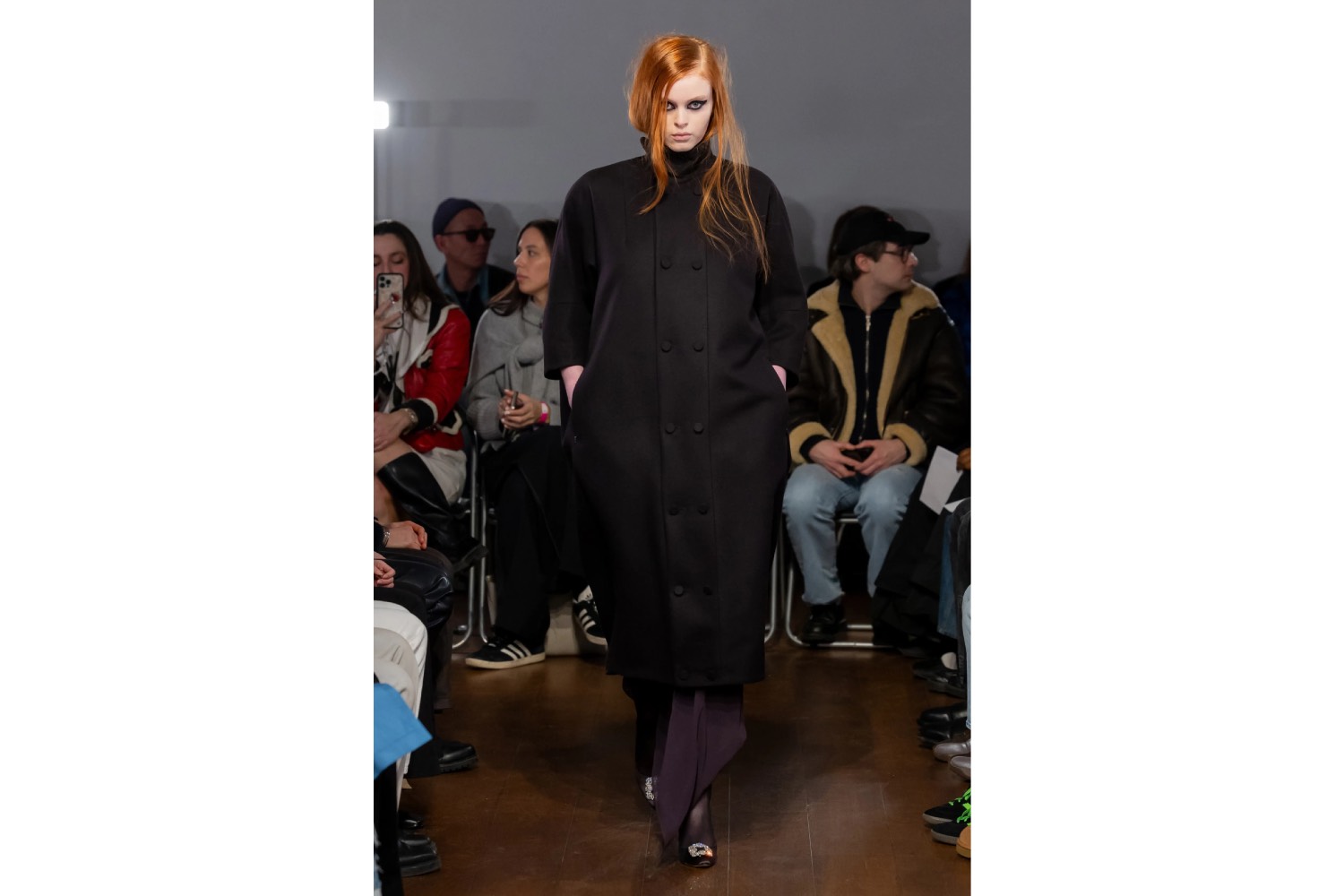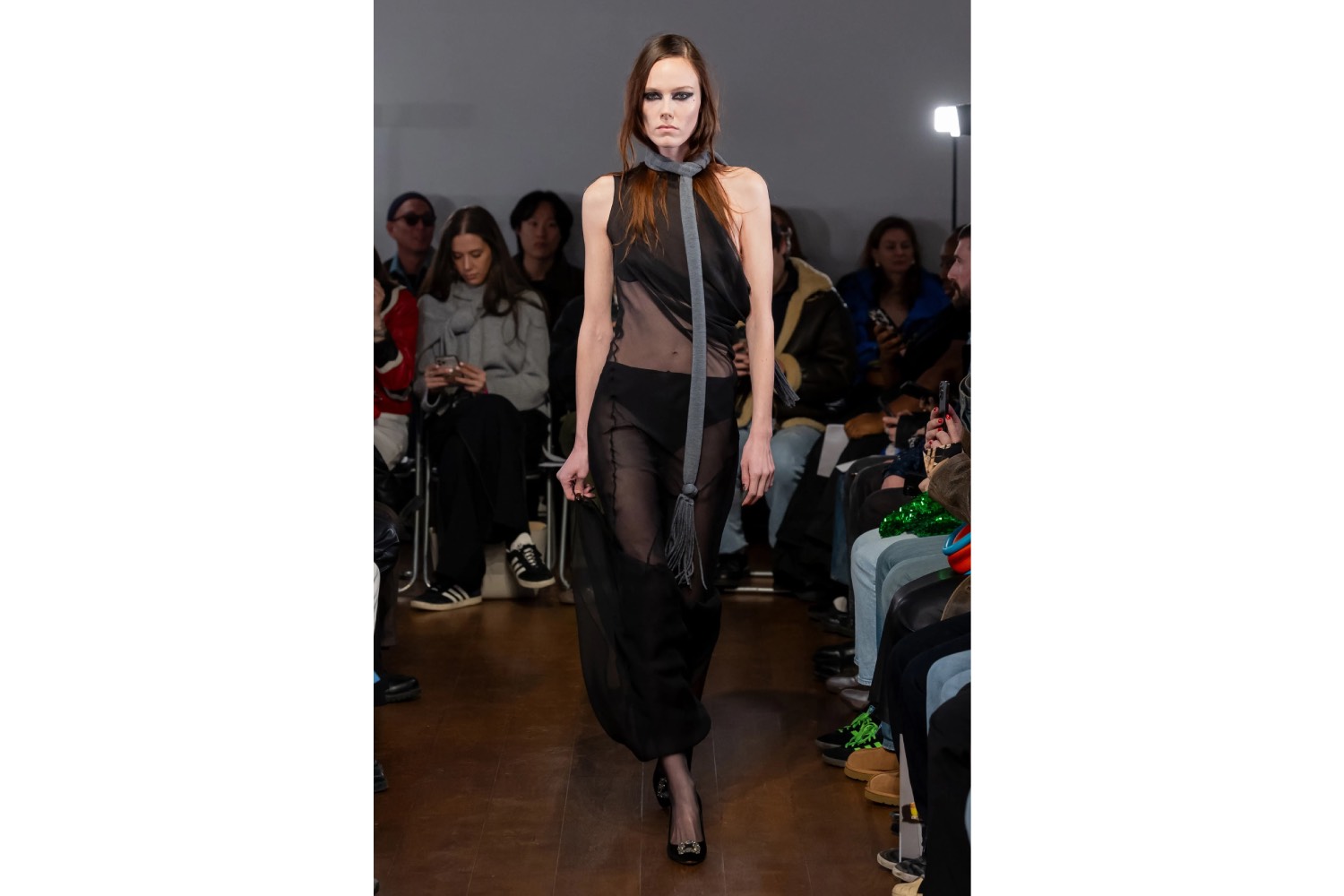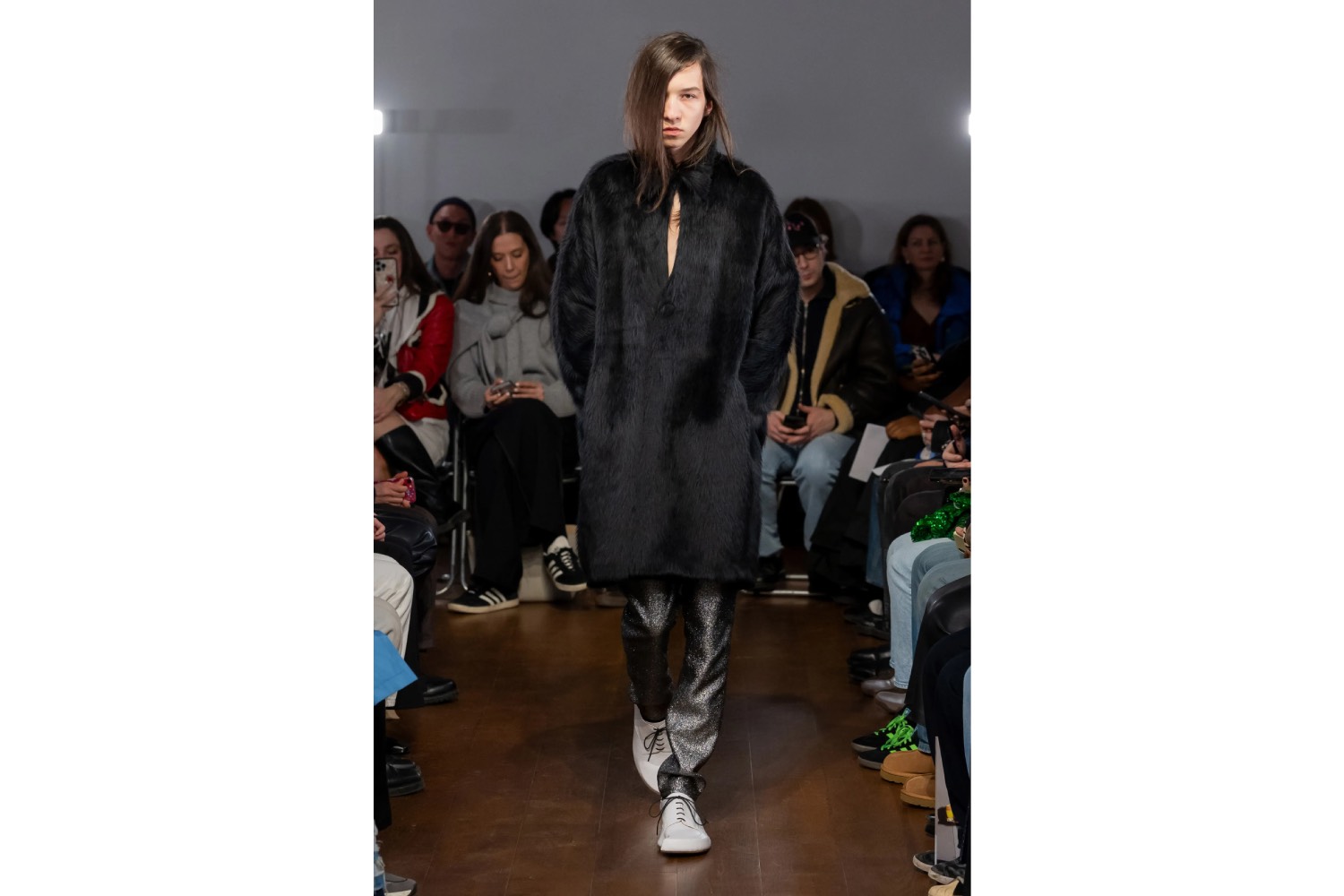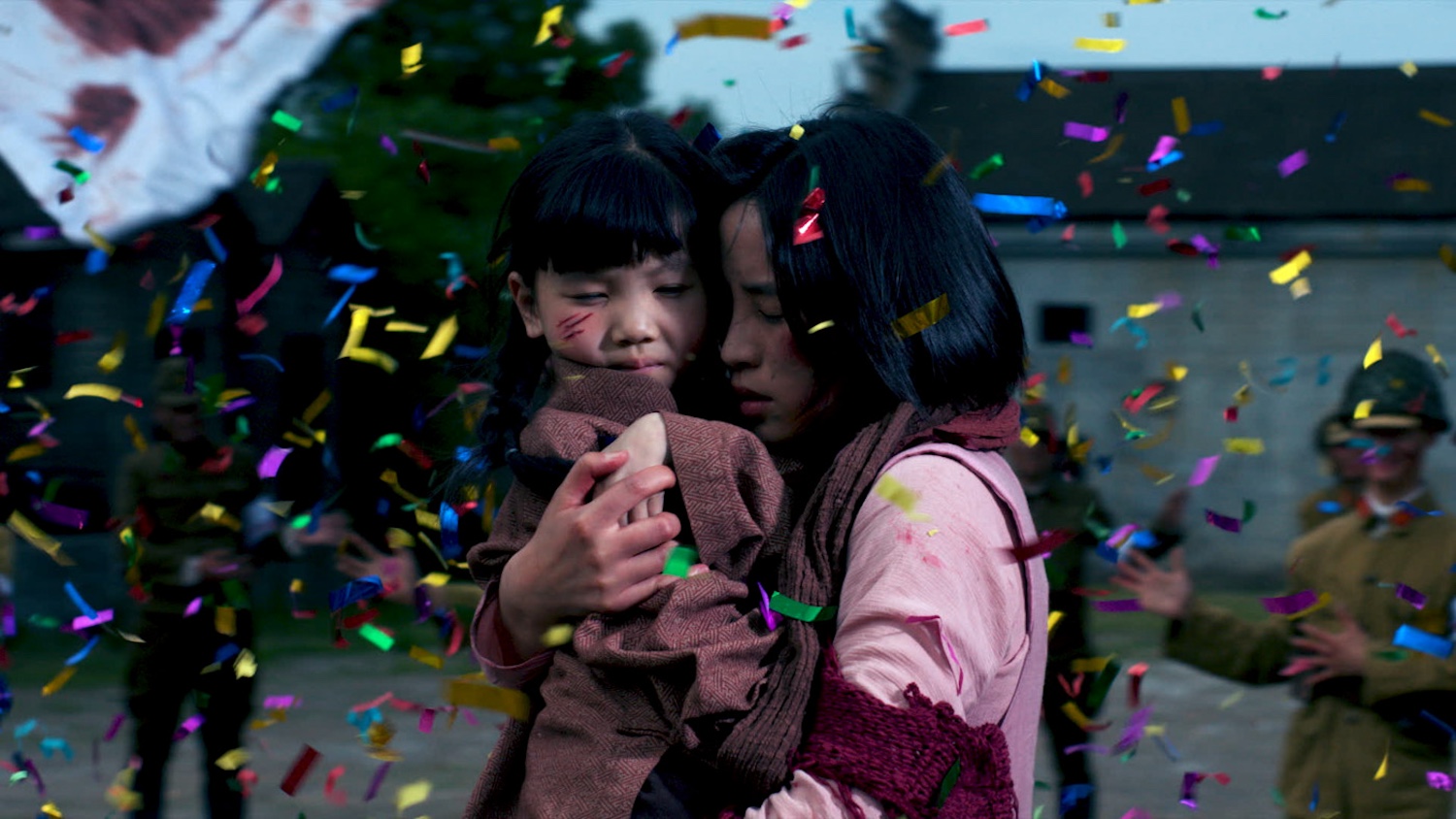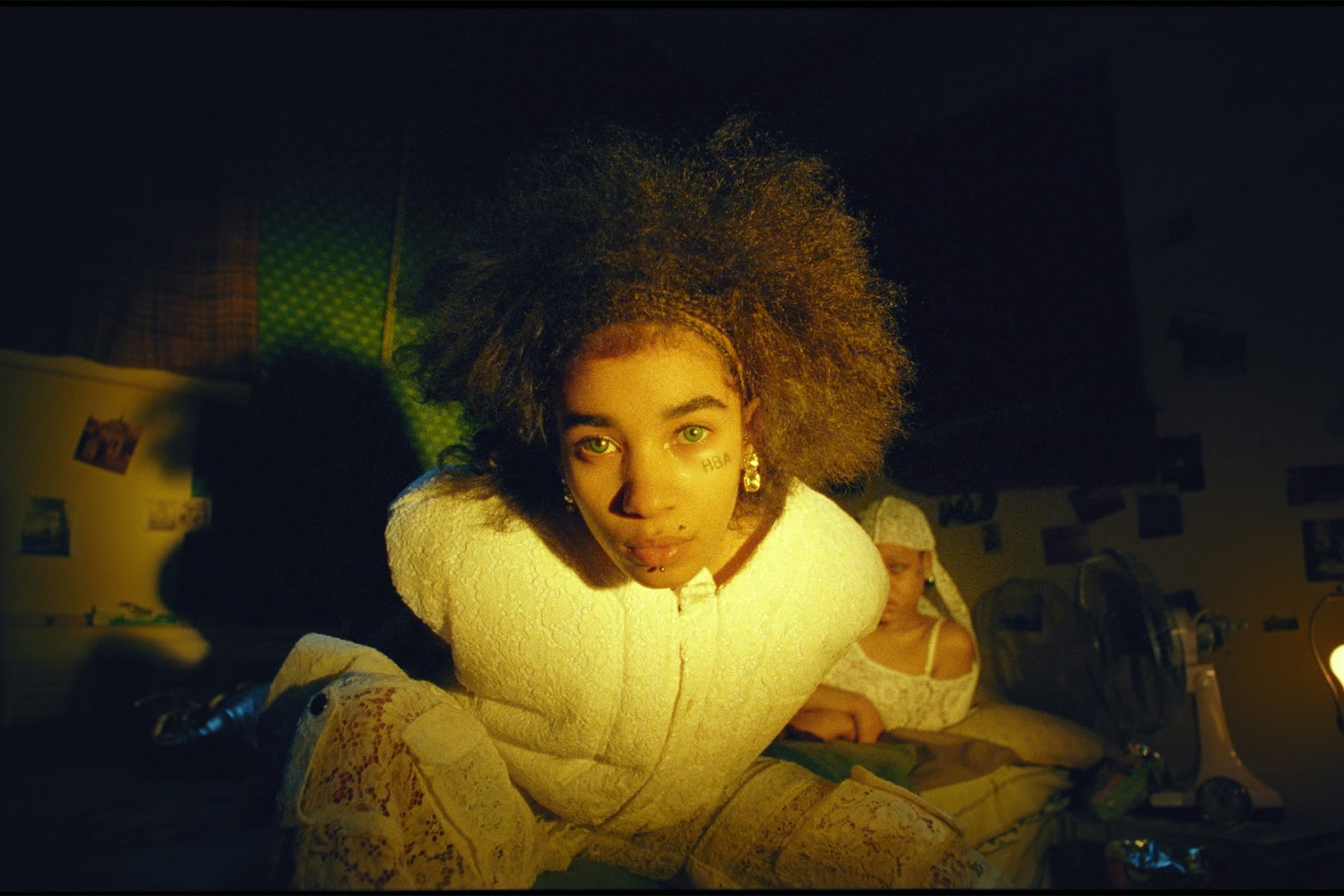Last month I saw Aaron Esh’s autumn/winter 2024 collection. The show was held at the Sarabande Foundation, a space in De Beauvoir, a pleasant neighborhood just behind the Kingsland Road, the main strip of Dalston.
The foundation was established by Lee Alexander McQueen, the most important British designer of the last three decades, as a springboard for emerging artists and designers. Aaron is one of the most recent beneficiaries of this — he graduated from McQueen’s alma mater CSM just eighteen months ago — and is already spoken about as the most talented London designer since Lee, which might not be a super-wise burden to place on anyone, but isn’t a thousand miles off, either.
Inside the space, coupettes of Moet were served, which is always nice, but, kind of unusually, the corks were also dropped around, next to free cigarettes in a glass fruit bowl. 6:00 PM on a Sunday night, and it felt like walking into a well-hosted afterparty. The show itself was presented as one long front row, with the runway snaking through, models almost brushing distance from the audience’s knees. The clothes? The clothes were super cool – glamorous, shimmery, with long, draping coats and dresses over skinny jeans or tights. Faux-fur coats, tuxedo jackets, and shimmery trousers. All were in tones of the night – grays, blacks, dark purple, and with occasional beiges, buttery, like the unwelcome morning-after light. Accessories like pencil-thin scarfs and beanie hats emphasized rather than took away from the overall vibe – a few dozen friends going out-out, or stumbling to the shop the next day.
There’s a deep truth in this collection, a level of resonance that has an internal seriousness, which is ironic, maybe, because this is, essentially, about partying, which is to say, stupid and unhealthy and unproductive, which is to say, existence itself. Those moments of hedonism, of rolling off the tube with your friends and into the house party, of catching yourself blinking in the blue light of the curved off-license mirror, of groping around for a last cigarette in the folds of your coat, pulling your jacket tight around you on the walk home, chaos, conversation, one last one, gossip – these are formative, beautiful, strange moments that deserve elevating as we treat them with frivolity. It’s what one lives for without really knowing it: gaiety and community, a joyful, urgent release from the daily grind of being British (“A people equally scared of life and death,” as someone once said, I think). The rhythm of youth ticking out weekends like a clock. “How did we get here?” “Who else is coming?” “Where are we going next?” “You look great, let’s go!” Genius. Beautiful. (People always said about McQueen’s dresses that they felt to women who wore them like armor, but the same is true of friends, especially in a city as forbidding but open as London). Anyway – I loved it.
There was one astounding look, the final one, twenty-four, which was so beautiful I literally gasped – a floor-length gown in what looked like black velvet, cut slim, with suit lapels and a cummerbund cinching the waist. With no exaggeration, this is a look that Cristobel would be proud of, showing a rare command of proportion, silhouette, and drape; a deep, dazzling glamour.
“A rare command of proportion, silhouette, and drape” is the kind of line that makes me sound like an old-world fashion journalist, and I’m very pleased to write it. Aaron Esh has spoken about his love of classic-classic fashion — proper fashion, 1950s Paris fashion, “command of proportion, silhouette, and drape” fashion, couturier fashion, “House of” fashion — and wanting to port this old-world chic into the wardrobes of the kids on the Dalston strip, one hundred yards east. What’s so interesting about this is that it kind of marks a subtle twist on the story of clothing design from the last ten or so years.
To put it quickly, I’d argue that designers of the generation after the great crash — my generation, I suppose — used the mechanics of fashion to orient the gaze of the fashion industry to the world previously seen as outside of fashion. Vernacular, quotidian reality became the inspiration. Demna’s Triple-S trainers, Martine Rose’s crocodile loafers, Craig Green’s workwear jackets, Alessandro Michele’s co-option of bootleg culture, even Heron Preston’s work with uniforms, GmbH’s deployment of queer clubwear. (I wrote about many of these for a series of columns in Flash Art). Now, you’ll hear grumpy older people sometimes say that this isn’t “real fashion,” as though fashion is a real thing anyway. What I suppose they’re getting at is a breakdown in the chain of connection, the lineage that runs from, say, Paul Poiret in the early years of the twentieth century to Chanel, Balenciaga, and Dior, to Yves Saint Laurent and then to, like, Alaïa, Jean-Paul Gaultier, Tom Ford. You can very directly see the lead in on all of them, but maybe this gets difficult to see with, like, a DHL T-shirt. I don’t agree with it, but I get the argument.
What’s so interesting is that this recent Aaron Esh show is a further radicalization, in which capital-F fashion can be used as a reference, an urge. He’s spoken about his label’s research process, in which thousands of screenshots are collated onto a collective Google Drive. In an interview with SSENSE, he spoke about how “forty percent are eBay, Vestiaire, or 1stDibs … you get to see these incredible garments: some old Madame Grès gown that belongs in a museum that the person is selling and they’re taking pictures of the inside of it — and you get to see how it’s made.” (Madame Grès, actually, is an incredible reference – a sculptor who was famous for her ability to drape and layer fabrics, making garments that fall over the body with weightless solidity, just like classical statutory). Old Dior and Pierre Cardin are references, and they feel as alive, as valid, and treated as energetically, as valid as a picture of Kate Moss swaggering down Camden Road in 2007. If his immediate forebears were rehabilitating aesthetics from outside the system, Esh is reconstructing fashion’s most classical lineage, reconstructed via our, like, “image matrix” and then applying it to the logics of the London night out. It’s not taking “The Real” to the glamorous world of fashion; it’s applying glamour to the real world, the actually lived, making it sparkle: bus headlights on rainy tarmac; prosecco bubbles. Throwing an exquisite coat over a hoodie, seeing how it fits, striding out, getting on with it.


